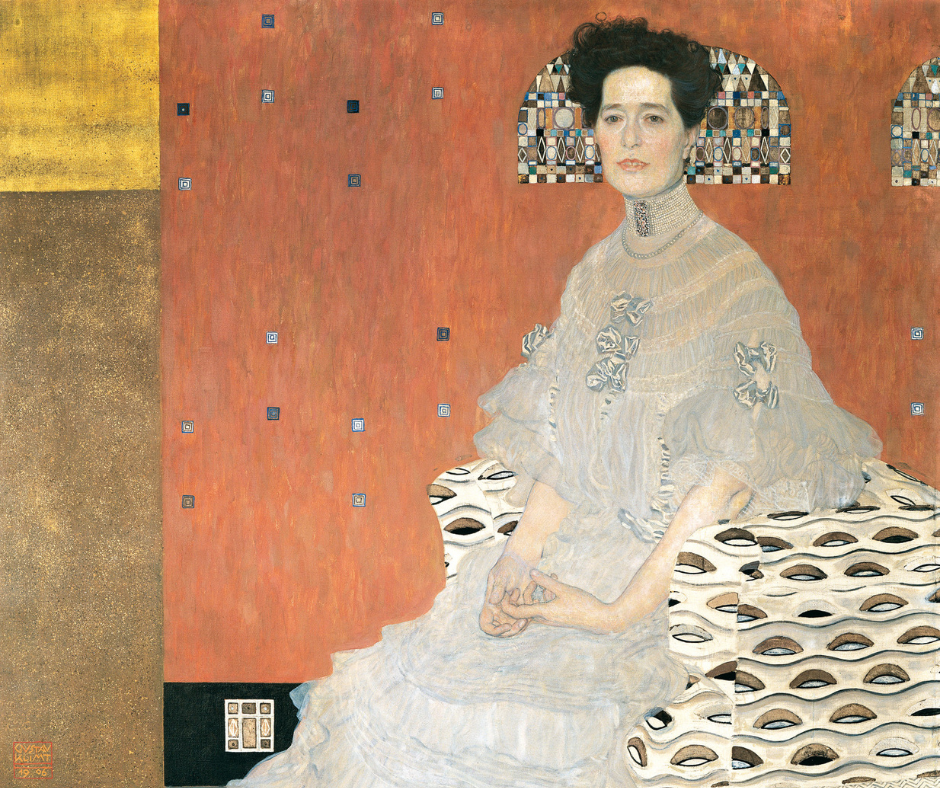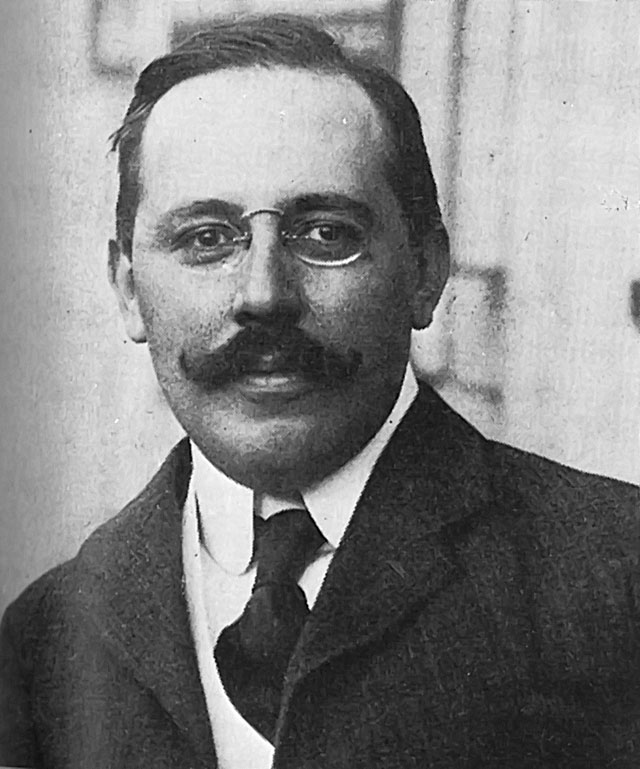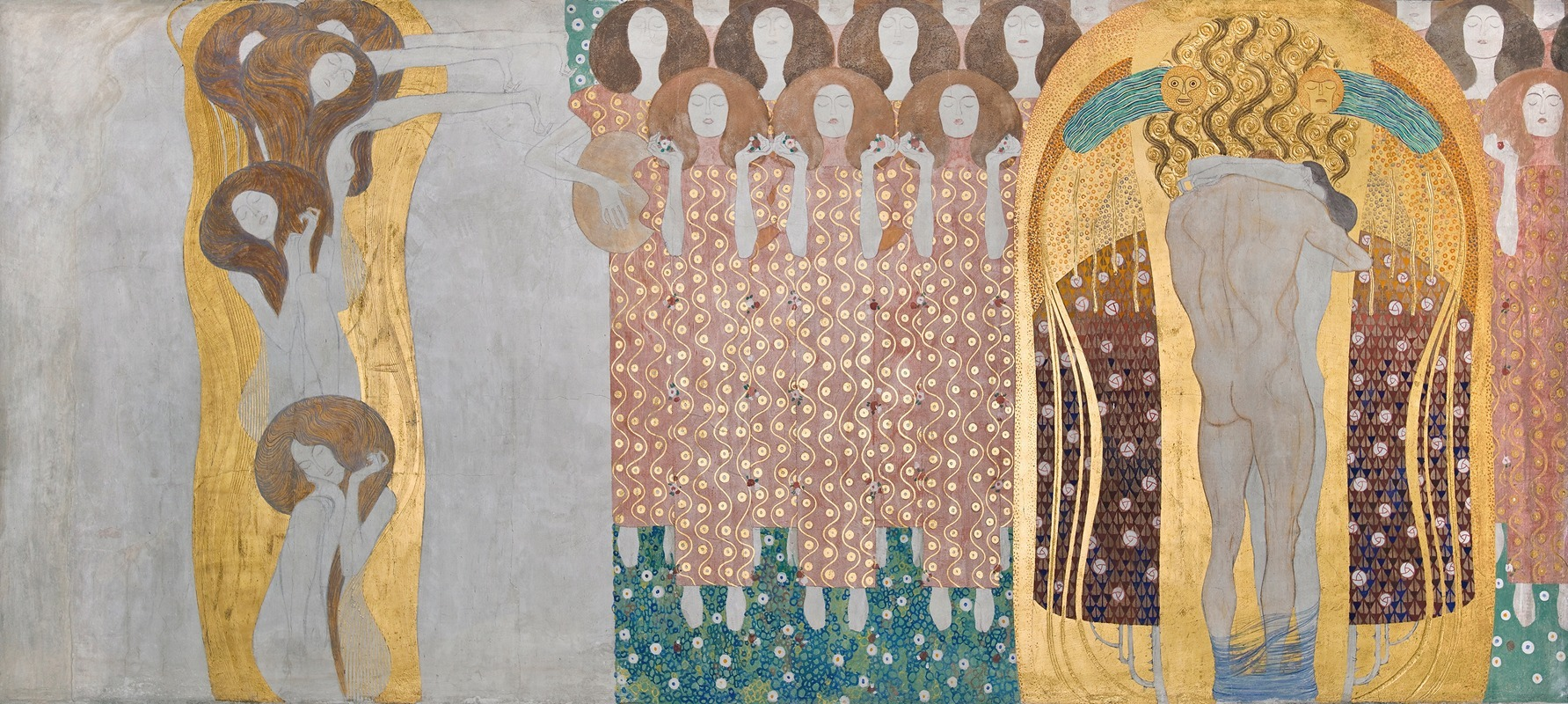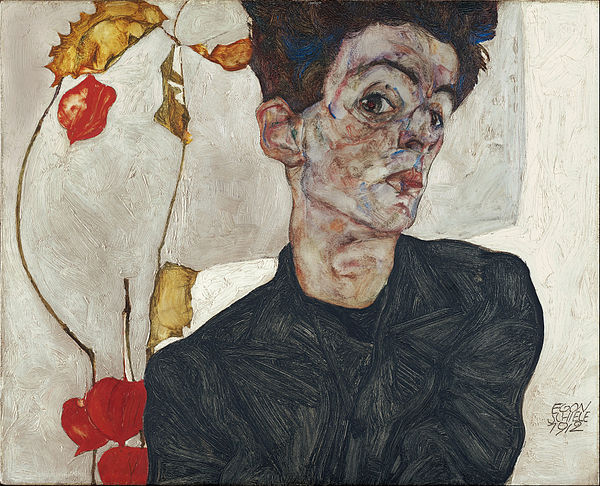

How The Vienna Secession Laid the Foundation for Modern Art in Austria
Summary
This article explores the pivotal role of the Vienna Secession in the evolution of modern art, emphasizing its break from traditional constraints and fostering of artistic innovation. It delves into the socio-political climate that spurred the movement, the key figures involved, and the Secession’s lasting impact on art and design, highlighting its advocacy for a total work of art and its influence on subsequent artistic movements.
Reflection Questions
- How did the socio-political climate of Austria-Hungary contribute to the rise of the Vienna Secession?
- In what ways did the Vienna Secession challenge traditional artistic norms and influence future art movements?
- Reflect on the importance of interdisciplinary collaboration as promoted by the Vienna Secession. How does this approach benefit the arts today?
Journal Prompt
Consider the impact of the Vienna Secession on modern art and its relevance to contemporary art practices. Write about how this movement’s principles can inspire today’s artists and designers to innovate and push boundaries within their own work.
Love the beauty of Art Nouveau and the abstraction of contemporary art? You absolutely must learn about the Vienna Secession (1897-1914) and the Austrian artists who founded this movement. The Vienna Secession not only redefined the boundaries of art and design in its own time but also established enduring principles that continue to influence the creative world. The movement’s emphasis on innovation, interdisciplinary collaboration, and the integration of art into everyday life remains relevant, inspiring artists, designers, and architects to this day. Through its enduring influence, the Viennese Secession continues to be celebrated as a pivotal moment in the evolution of modern art, its spirit alive in the ongoing dialogue between tradition and innovation. Read on to learn more about this fascinating art movement.
The Climate That Allowed for the Vienna Secession
Before the emergence of the Viennese Secession in the late 19th century, the artistic climate in Austria was predominantly conservative, deeply rooted in traditional values and historical influences. The dominant force in the arts was the Künstlerhaus, an association and exhibition venue for artists in Vienna, which adhered strictly to academic art norms and was resistant to modernist trends.
This environment offered little room for innovation or deviation from established styles, stifling the creative impulses of many avant-garde artists. The art scene was characterized by historicism and a penchant for romanticism, reflecting a longing for an idealized past rather than an exploration of contemporary life or forward-looking ideas.
Fuel your creative fire & be a part of a supportive community that values how you love to live.
subscribe to our newsletter
The Socio-Political Landscape of Austria-Hungary
The socio-political landscape of Austria-Hungary at the turn of the century was marked by rapid industrialization, urbanization, and significant changes in social structures. These shifts led to a growing discontent among the populace with the traditionalist and imperial status quo, mirroring the unrest felt by the artistic community against the conservative constraints of the art establishment.
The period was also characterized by a heightened sense of nationalism and various cultural movements seeking expression and reform across Europe. In Austria, this was further complicated by the diverse ethnic composition of the Austro-Hungarian Empire, leading to a rich but complex tapestry of cultural identities.
Artists and the Vienna Secession


The rise of the Viennese Secession can be seen as a direct response to these conditions. Artists sought to break away from the stifling traditions of the Künstlerhaus, advocating for artistic freedom, innovation, and an art that reflected the changing times. The Secession movement was not just a rebellion against artistic norms but also an expression of broader societal desires for reform and modernization. It aligned with similar movements across Europe, such as the Art Nouveau movement, which sought to harmonize art with modern life.
The Secessionists aimed to create a “total art” (Gesamtkunstwerk) that encompassed all aspects of design and art, reflecting the modern experience and moving beyond the imitation of historical styles. It would cover the applied arts like graphic art, the fine arts, and the decorative arts. This was a bold statement against the backdrop of a society undergoing profound changes, positioning the Secession as a catalyst for the evolution of modern art in Austria.
Through exhibitions and public works, the Secessionists introduced Vienna and Austria to a new artistic language, laying the groundwork for the country’s engagement with modernist movements and signaling a departure from the past towards a more progressive and dynamic future.
Founding the Vienna Secession


The founding of the Viennese Secession in 1897 marked a pivotal moment in the history of modern art in Austria. This groundbreaking movement was initiated by a group of artists who were disillusioned with the conservative nature of the Vienna Künstlerhaus, the main artistic institution of the time, which they felt stifled creativity and innovation.
Key Figures Who Led the Movement


Among the key figures spearheading this rebellion were Gustav Klimt, Koloman Moser, and Josef Hoffmann. These artists, along with others who shared their discontent, sought to establish a new platform that would embrace and promote contemporary art forms and ideas.
Gustav Klimt, already a successful painter known for his symbolist work, became the first president of the Secession and is often considered its most prominent member. His vision for the movement was to create an environment where artists could pursue artistic exploration free from the constraints of traditional academia. Koloman Moser and Josef Hoffmann, both multi-talented in graphic and product design as well as architecture, contributed to the movement’s strong focus on the applied arts, advocating for the unity of fine arts and decorative arts.
The Vienna Secession Manifesto


The manifesto of the Viennese Secession clearly articulated the group’s ambitions: to provide a venue for unconventional artists to exhibit their work, to bring the best foreign art to Vienna, and to publish their magazine, “Ver Sacrum” (Sacred Spring). This publication not only served as a platform for showcasing their work but also for disseminating the ideals of the movement. The Secessionists’ desire for artistic freedom was a direct challenge to the academic art establishment’s strictures, reflecting a broader cultural and intellectual ferment within fin-de-siècle Vienna.
The goals of the Viennese Secession were ambitious and multifaceted. They aimed to break away from the domination of historicism and to foster an art that was reflective of the modern experience, integrating contemporary sensibilities and technological advancements. The movement sought to blur the boundaries between the fine and applied arts, advocating for the total work of art (Gesamtkunstwerk) that would encompass all aspects of visual culture. This holistic approach to art-making was revolutionary at the time and had a profound influence on the development of modern art and design in Austria and beyond.
The founding of the Viennese Secession was not merely an artistic revolt but a manifestation of a deeper longing for renewal and progress in a society on the cusp of the modern age. Through their exhibitions, collaborations, and the iconic Secession Building, which served as their exhibition space, the Secessionists created a legacy of innovation and freedom that resonated deeply within Austrian culture and paved the way for future generations of artists.
Topics and Themes Addressed by the Vienna Secession
The Viennese Secession, part of the broader Art Nouveau movement in Europe, was distinguished by its unique blend of artistic features and themes. It sought to break away from the prevailing historical styles, advocating for a new, modern art that was free from traditional constraints. The movement emphasized originality, artistic freedom, and the integration of art into everyday life. Its characteristics were a complex amalgamation of symbolic content, a fascination with the natural world, and a commitment to aesthetic purity and simplicity.
Artistic Features and Inspirations


Key artistic features of the Viennese Secession included a departure from realism and traditional fine arts, favoring instead a more stylized approach to depiction that blends Art Nouveau elements with the graphic arts. This was evident in the use of sinuous lines, floral and geometric motifs, and a rich yet selective color palette. These elements were combined to create artwork that was both decorative and deeply meaningful. Gustav Klimt, one of the movement’s leading figures, exemplified this approach with his iconic paintings that blended sensuality, symbolism, and intricate patterns to explore themes of life, death, and rebirth.
The influence of Art Nouveau on the Viennese Secession was profound, as both movements shared an enthusiasm for organic forms and a desire to bring art into closer alignment with life. However, the Secessionists also drew inspiration from other contemporary movements and historical sources, including the British Arts and Crafts Movement, Japanese art, and Byzantine art. This eclectic mix of influences helped the Secessionists create a distinctive aesthetic that was both modern and timeless, setting the stage for the development of modernist design and architecture.
The Ver Sacrum


“Ver Sacrum” (Sacred Spring), the official magazine of the Viennese Secession, played a critical role in promoting the movement’s ideals. Launched in 1898, it served not only as a showcase for the work of Secession artists but also as a platform for articulating their artistic philosophy and aesthetic principles. Through essays, illustrations, and graphic designs, “Ver Sacrum” explored themes of renewal, the unity of the arts, and the importance of creating a total work of art. The magazine was instrumental in disseminating the ideas of the Viennese Secession both within Austria and internationally, fostering a sense of community among artists and elevating the movement’s profile.
The characteristics of the Viennese Secession—its stylistic innovations, thematic explorations, and the pivotal role of “Ver Sacrum”—underscore the movement’s commitment to creating a new art for a new century. By championing artistic freedom, embracing a wide range of influences, and seeking to erase the boundaries between different art forms, the Secessionists laid the groundwork for the modern art movements that would follow, leaving an indelible mark on the evolution of visual culture. Today’s contemporary artists (especially graphic artists) are still inspired by this movement.
Major Works and Projects of the Vienna Secession


The Viennese Secession, with its radical departure from traditional art forms, gave birth to a plethora of significant works and projects that have since been regarded as milestones in the evolution of modern art and architecture. Among the most emblematic of these is the Secession Building, designed by Joseph Maria Olbrich in 1898.
This architectural masterpiece served as a physical manifesto of the movement’s ideals. Its façade, adorned with the iconic “Ver Sacrum” inscription and crowned with a golden dome of laurel leaves, symbolizes the Secessionists’ break from the past and their commitment to artistic innovation. The building was not just an exhibition space but a statement of purpose, embodying the unity of the arts and the movement’s forward-looking ethos.
Gustav Klimt’s “The Kiss” (1907-1908) stands as another monumental work, capturing the essence of the Secessionist aesthetic with its sumptuous blend of gold leaf, intricate patterns, and sensual figures. The painting reflects the Secession’s exploration of themes such as love, beauty, and desire, wrapped in a decorative style that bridges the gap between fine art and ornamentation. “The Kiss” is celebrated not only for its visual allure but also for its innovative approach to traditional subjects, encapsulating the spirit of renewal that defined the movement.
The First Secession Exhibition and Other Major Projects


The collaborative projects and exhibitions organized by the Secession were crucial in defining and disseminating the movement’s aesthetic. One of the most notable of these collaborations was the Beethoven Exhibition of 1902, which included Klimt’s “Beethoven Frieze,” a monumental work that pays homage to Beethoven’s Ninth Symphony. The exhibition was an interdisciplinary event that combined painting, sculpture, and architecture to create a total work of art, showcasing the Secession’s ambition to integrate all forms of creative expression.
Other significant projects include the Stoclet Palace in Brussels, designed by Josef Hoffmann and adorned with mosaics and murals by Klimt. This opulent residence exemplifies the Gesamtkunstwerk (total work of art) concept, integrating architecture, furniture design, and decorative arts into a harmonious whole. It stands as a testament to the Secession’s influence on the development of modernist architecture and design.
The works and projects of the Viennese Secession, from the revolutionary Secession Building to iconic paintings like “The Kiss” and groundbreaking exhibitions, played a pivotal role in challenging and redefining the boundaries of art. These endeavors not only marked a departure from traditional aesthetics but also paved the way for future artistic movements, cementing the Secession’s place in the history of modern art. Through their collaborative spirit and dedication to innovation, the Secessionists created a legacy that continues to inspire and intrigue artists and designers to this day.
The Impact of Vienna Secession on Modern Artists in Austria
The Viennese Secession, with its bold rejection of traditional constraints and its embrace of artistic innovation, had a profound impact on the landscape of modern art in Austria. Its influence extended far beyond its active years, shaping the direction of Austrian art for generations to come. The movement’s emphasis on artistic freedom, the integration of art with life, and the pursuit of a total work of art inspired subsequent generations of artists, encouraging them to explore new forms and ideas.
Expressionism Emerges in Austria


One of the most significant impacts of the Secession was its role in paving the way for the emergence of Expressionism in Austria. Artists like Oskar Kokoschka and Egon Schiele, though not directly associated with the Secession, were undoubtedly influenced by its spirit of rebellion and its break from academic traditions. These artists took the Secession’s emphasis on emotional expression and individualism further, exploring deeper psychological and existential themes through distorted forms and bold colors. Their work marked a move towards a more introspective and subjective form of art, reflecting the complex anxieties of the early 20th century.
Art Deco Finds a Foothold in Austria
The transition from the Viennese Secession also heralded the arrival of Art Deco in Austria, characterized by its decorative elegance and emphasis on geometric shapes. Architects and designers like Josef Hoffmann, who was a founding member of the Secession, played a key role in this transition.
Hoffmann’s work, including his designs for the Wiener Werkstätte, showcased a refinement of Secessionist principles, blending functionality with aesthetic beauty. This transition illustrated the Secession’s lasting influence on design and architecture, emphasizing clarity, simplicity, and the integration of art into everyday objects.
Modernist Principles Become a Force for Cultural and Social Change
The Viennese Secession’s role in the development of modernist principles in Austrian art cannot be overstated. It challenged the status quo, advocating for a new art that was free from historical imitation and that reflected the modern experience. The movement’s emphasis on originality, the synthesis of different art forms, and the importance of artistic expression laid the groundwork for modernism in Austria. It demonstrated that art could be a force for cultural and social change, inspiring artists to experiment with new techniques and to view art as a means of engaging with the world around them.
Final Thoughts: The Movement’s Legacy and Continuing Influence


The Viennese Secession, as a beacon of modernism at the turn of the 20th century, has left an indelible mark on Austrian art and architecture, its influence permeating far beyond its original period into modern design and contemporary art practices. This movement not only championed the integration of art into daily life but also laid foundational principles for the evolution of modern art, advocating for innovation, artistic freedom, and the breakdown of traditional hierarchies between the fine and applied arts.
The legacy of the Viennese Secession in Austrian art and architecture is evident in the continued reverence for its key figures and landmarks. The Secession Building itself remains a symbol of artistic revolution and a pilgrimage site for those interested in the genesis of modern art. Moreover, the works of Gustav Klimt and other Secessionists continue to be celebrated for their groundbreaking approach to form, color, and subject matter, influencing countless artists and designers in the generations that followed.
Beyond its historical contributions, the movement’s influence on modern design and contemporary art is profound. The Secessionists’ embrace of total art—encompassing everything from painting and sculpture to graphic design and architecture—presaged later developments in interdisciplinary art practices. Their commitment to blending art with life, along with their explorations into abstraction and symbolism, can be seen in contemporary art’s ongoing interest in mixed media, installation art, and the incorporation of new technologies and materials.
The preservation and current appreciation of Secession-era works in Austria and internationally underscore the movement’s lasting significance. Museums dedicated to showcasing modern art frequently highlight Secessionist works as foundational to understanding the evolution of 20th-century art. Efforts to preserve and restore artifacts and buildings from the period reflect a societal recognition of their cultural and historical value. The continued fascination with the Secession era, evidenced by exhibitions, academic research, and public interest, attests to its enduring relevance.
Moreover, the principles of the Viennese Secession have had a lasting impact on design, particularly in the fields of graphic design, furniture, and fashion, where the emphasis on functionality, beauty, and innovation continues to resonate. The movement’s holistic approach to art and design—seeing no distinction in value between high art and craft—has influenced contemporary design thinking, promoting a universal aesthetic that seeks to harmonize form and function.
Design Dash
Join us in designing a life you love.
-
All About Our 7-Day Focus & Flex Challenge
Sign up before August 14th to join us for the Focus & Flex Challenge!
-
Unique Baby Names Inspired by Incredible Women from History
Inspired by historic queens, warriors, artists, and scientists, one of these unusual baby names might be right for your daughter!
-
Finding a New 9 to 5: How to Put Freelance Work on a Resume
From listing relevant skills to explaining your employment gap, here’s how to put freelance jobs on your resume.
-
What is Generation-Skipping, and How Might it Affect Sandwich Generation Parents?
The emotional pain and financial strain of generation skipping can be devastating for Sandwich Generation parents.
-
Four Material Libraries Dedicated to Sustainability, Preservation, and Education
From sustainable building materials (MaterialDriven) to rare pigments (Harvard), each materials library serves a specific purpose.
-
Do You Actually Need a Beauty Fridge for Your Skincare Products? (Yes and No.)
Let’s take a look at what dermatologists and formulators have to say about whether your makeup and skincare belong in a beauty fridge.








